-
Car Reviews
- Car News
-
Car Comparisons
Latest comparisons
- Chasing Deals
The 2017 Mazda CX-3 has been launched in Australia, armed with some subtle but important changes to the country’s highest-selling small SUV to keep it fresh among newer competitors, such as the Toyota C-HR and incoming Hyundai Kona. Over 40,000 CX-3s have been sold in Australia since the car’s March 2015 arrival, an average of 1,500 per month.

Now equipped with autonomous emergency braking in both forward and reverse, the CX-3 completes Mazda Australia’s aim to fit its whole passenger car range with the potentially life-saving safety technology as standard equipment – a first in the Australian automotive marketplace. Only the MX-5 roadster and BT-50 ute remain unavailable with the technology, for now.
The 2017 Mazda CX-3 range follows similar updates to the Mazda 2 light car, and is also now more comprehensively equipped. Like the 2017 Mazda 2, it has also been treated to a number of under-the-skin improvements to help curtail the car’s noise, vibration and harshness levels.
The 2017 update of the CX-3 also includes Mazda’s G-Vectoring Control dynamics assist technology, which adjusts the engine’s torque in reaction to steering inputs and improves the car’s overall stability, now standard across the range.
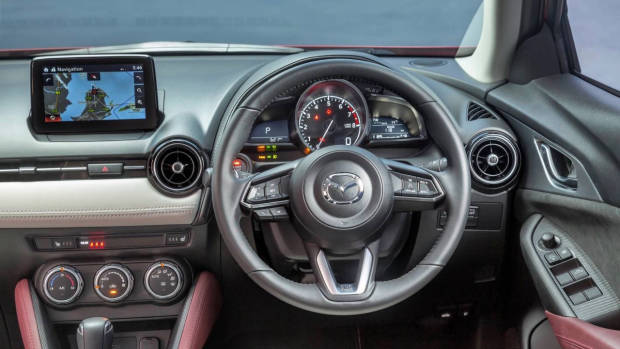
Mazda also claims that the CX-3’s ride and handling have been further improved, with a redesigned front lower arm bushing improving steering response, and the angle of the bushing itself has been altered to aid ride quality. The CX-3 diesel has earned active noise cancellation technology from the Mazda 6 and CX-5 diesels, which is claimed to significantly reduce engine noise at all speeds. Greater levels of noise insulation around the car are aimed at reducing road noise and vibration, and enhancing the CX-3’s driving experience, according to Mazda.

The CX-3’s four-tier model range remains unchanged, though pricing has increased slightly on all models except the sTouring, itself remaining steady. The same 109kW/192Nm 2.0-litre four-cylinder petrol and 77kW/270Nm 1.5-litre four-cylinder turbo diesel engines remain, matched to front- or all-wheel drive drivetrains and six-speed torque converter automatics across the range.
Crucially for some Australian buyers, the 2017 Mazda CX-3 offers a six-speed manual on all models, albeit only in petrol front-wheel drive form. A new colour, Eternal Blue, has replaced Deep Crystal Blue.
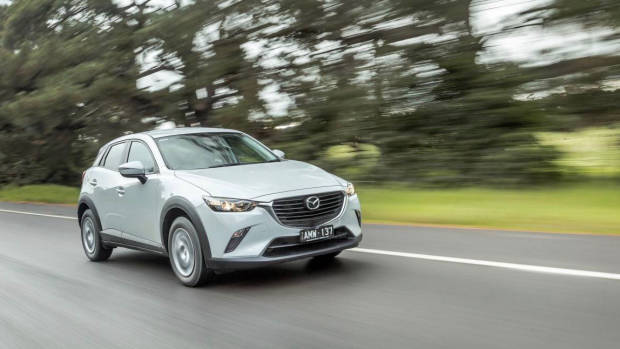
The entry-level model in the 2017 Mazda CX-3 range remains the Neo, with prices starting at $20,490 plus on-road costs (+$500). The Neo gains autonomous emergency braking in both forward and reverse, a height-adjustable passenger’s seat and electric-folding mirrors as standard equipment, in addition to six airbags, cloth seat trim, air-conditioning, 16-inch steel wheels with wheel covers, push-button start, a four-speaker sound system with Bluetooth, USB and AUX inputs, a variable boot floor height, rear parking sensors and auto-off headlights.

Above the Neo sits the CX-3 Maxx, which is the traditional best-seller in the range – 55% of CX-3 buyers have chosen the Maxx thus far, a figure Mazda Australia expects to remain steady. Its pricing starts at $22,890 plus on-road costs (+$500), and now includes blind-spot monitoring, rear traffic alert and a DAB+ digital radio as standard equipment. That’s in addition to 16-inch alloy wheels, a seven-inch touchscreen with Mazda’s MZD Connect infotainment system – itself with a rotary control dial and internet radio capability, a reversing camera, satellite navigation and a leather steering wheel and gearknob.
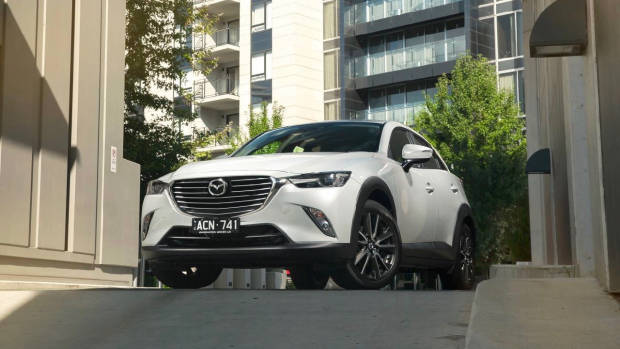
The 2017 Mazda CX-3 sTouring (from $26,990) is the only model without a pricing change, and its equipment levels remain steady, aside from the addition of driver fatigue monitoring, traffic sign recognition and heated mirrors that fold when the car is locked. Otherwise, CX-3 sTouring standard equipment includes 18-inch alloy wheels, keyless entry and start, automatic headlights and rain-sensing wipers, LED headlights and tailights, LED daytime running lights, LED front foglamps, half Maztex fake-leather and cloth seat trim, a flip-up heads-up display with speed and navigation information and climate control air-conditioning.
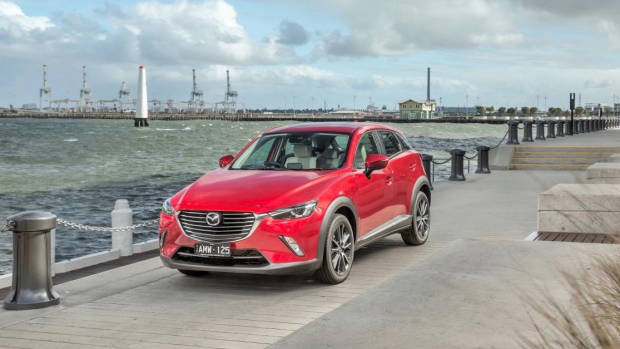
Sitting atop the local 2017 Mazda CX-3 range is the Akari, which starts from $31,490 plus on-road costs (+$200). The CX-3 Akari now includes heated front seats, a ten-way electric driver’s seat with memory settings, front parking sensors – previously an accessory, lane departure warning and adaptive LED headlights, which adapt their beam to block out objects. This is in addition to half-leather/suede trim and an electric sunroof.
2017 Mazda CX-3 pricing (plus on-road costs)
2.0-litre four-cylinder petrol:
– Neo front-wheel drive six-speed manual: $20,490
– Neo front-wheel drive six-speed auto: $22,490
– Maxx front-wheel drive six-speed manual: $22,890
– Maxx front-wheel drive six-speed auto: $24,890
– Maxx all-wheel drive six-speed auto: $26,890
– sTouring 2.0-litre petrol front-wheel drive six-speed manual: $26,990
– sTouring 2.0-litre petrol front-wheel drive six-speed auto: $28,990
– sTouring 2.0-litre petrol all-wheel drive six-speed auto: $30,990
– Akari 2.0-litre petrol front-wheel drive six-speed manual: $31,490
– Akari 2.0-litre petrol front-wheel drive six-speed auto: $33,490
– Akari 2.0-litre petrol all-wheel drive six-speed auto: $35,490
1.5-litre four-cylinder turbo diesel:
– Maxx front-wheel drive six-speed auto: $27,290
– sTouring all-wheel drive six-speed auto: $33,390
– Akari all-wheel drive six-speed auto: $37,890
Soul Red metallic paint: $300
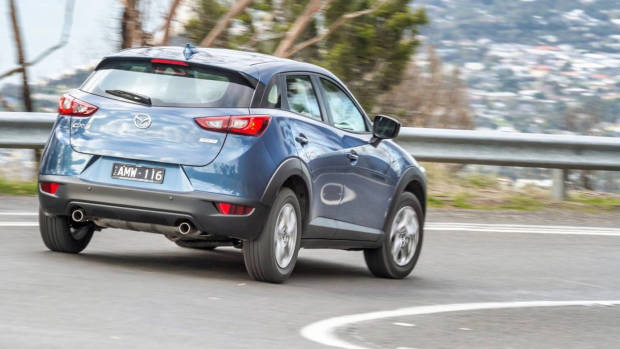
Chasing Cars was in attendance at the Australian launch for the 2017 Mazda CX-3 – check out our review here.
The 2017 Mazda CX-3 range is in dealerships now.
Latest news
About Chasing cars
Chasing Cars reviews are 100% independent.
Because we are powered by Budget Direct Insurance, we don’t receive advertising or sales revenue from car manufacturers.
We’re truly independent – giving you Australia’s best car reviews.